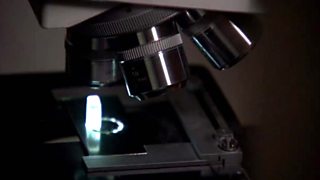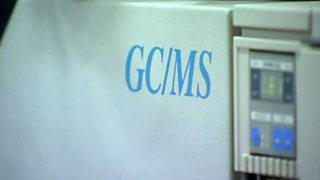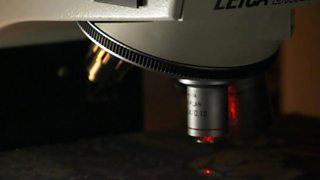Microscopy
Looking at a paint sample under a powerful microscope is an incredibly useful technique to identify the materials present in a painting.
Tiny samples of paint are taken from the painting, usually from areas where there is already some damage and then set in a block of resin. The resin is then ground and polished to create a cross-section of the paint sample.

When looked at under a microscope it is possible to see the layer structure of the paint and to identify some of the pigments used.
Every artist has their own way of painting and of building up the layers of paint in a picture. By looking at a cross-section of a paint sample you can see how the artist put the picture together.
This information can then be compared to a known work by that artist. This provides evidence to help prove (or disprove) attribution.
Other techniques
-
![]()
Gas chromatography–mass spectrometry (GC-MS)
For identifying the binding medium in paint
-
![]()
Infrared radiation (IR)
For looking under the surface of a painting
-
![]()
Multispectral scan
For seeing through each layer of paint
-
![]()
Raman laser spectroscopy
For identifying pigments used in a painting
-
![]()
Thread count
For comparing canvas types
-
![]()
X-radiation (X-ray)
For examining the overall condition of a painting
-
![]()
X-ray fluorescence
For analysing the pigments used in a painting







